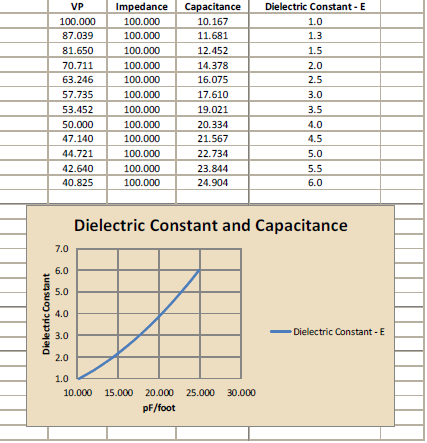No need to apologize! Yes, there are bigger fish to fry, but the smaller ones need to be properly understood and addressed, too.
The ear doesn’t do approximations. Every error in timing is heard collectively. It is what it was designed to do. Far from monumental changes are needed to be heard. The REACTANCE of the cable to the speaker’s non linearities need to be understood, not JUST the bulk value at 1 KHz (where L and C are measured). And yes, it will be totally different for every amp, cable and speaker.
First order filter effects are WAY above audio range for the filter phase change you are refereeing to. But, the INDUCTANCE caused by the chosen capacitance is active within the audio range, so good efforts should be made to minimize it. I trade super low cap for better / lower inductance…so I actually agree with you, some attributes are better left alone to capture more significant ones.
You are also in good company to say, “I feel it makes no difference”. That’s fine too, but thank goodness people who lay out PC boards, and make cables don’t think it is good enough because you technically want the best wrong answer you can afford! You can’t get it 100% right, but you can indeed get it better. Audio is death by a thousand cuts as each and every “good enough” approximation get less and less good through the circuit. Phase doesn’t stop changing but keeps getting more and more inaccurate. Reactive effects, especially speaker cables, doesn’t stop signal transfer non linearity across the audio frequency range into reactive low impedance loads.
You can accurately argue cable reactance is less important in interconnects as they see a near “zero” current load, negating their “impedance” and thus look like a simple lump reactive value. But that inductive value alters phase, too. And, the current coherence through the wire alters arrival times. Trust me (no don’t do that) I’m well aware of how “insignificant” it all is with cable. I have thirty plus patents on cable that was “good enough”, and now we have cheaper, better cables than before.
I certainly understand that ANY variable taken by itself is “good enough”, but ignore those approximations and inaccuracies and better methods to manage non linearities will be developed. Ted looks at DAC’s, I looked at cables, Paul looks at other hardware but EVERY bit/byte and nibble of accuracy counts in my book. It is what we do for you, the customer.
I agree COST is a factor. If zero R, L and C products could be made we’d certainly use them…UNLESS the cost of our project runs out once they re considered in or pecking order of improvement. But, should the improvement not be offered for those that can reach it within their budget? If the improvements are REAL, of course, and measured so you know the technology that derive the changes?
The cables, and even Ted’s DAC technology exist BECAUSE we decided that “good enough” is not the road to better. That seemingly unimportant changes DO make a difference. What was “significantly” changed in the new firmware? Stuff someone not in the know outside of “numbers” would say, “doesn’t matter”? Snowmass was tuck and cut micro surgery to an already measurably (Stereophile) “good enough” standard yet, Ted just made it better right after it was deemed “good enough”.
As long as technology is REAL, and heads in the right direction, THAT is better. Costs will catch-up to the advances but we need to develop the process cost advances to do it…so it cost more early in the process.
People who make legitimately good products have no issue explaining the technology, to offer FREE trials, and to see where you are in the chain of improvement for your dollar spent. We REQUIRE that it really does make an improvement, hoping you think it does isn’t “good enough”.
Back on topic, Snowmass is FREE and YES it is HUGELY better in my judgement so do upgrade from what was “negligible” on a scope, and enjoy!
Thank goodness Ted thinks in BETTER, BETTER, BETTER and not “negligible” and “good enough”.
Galen
